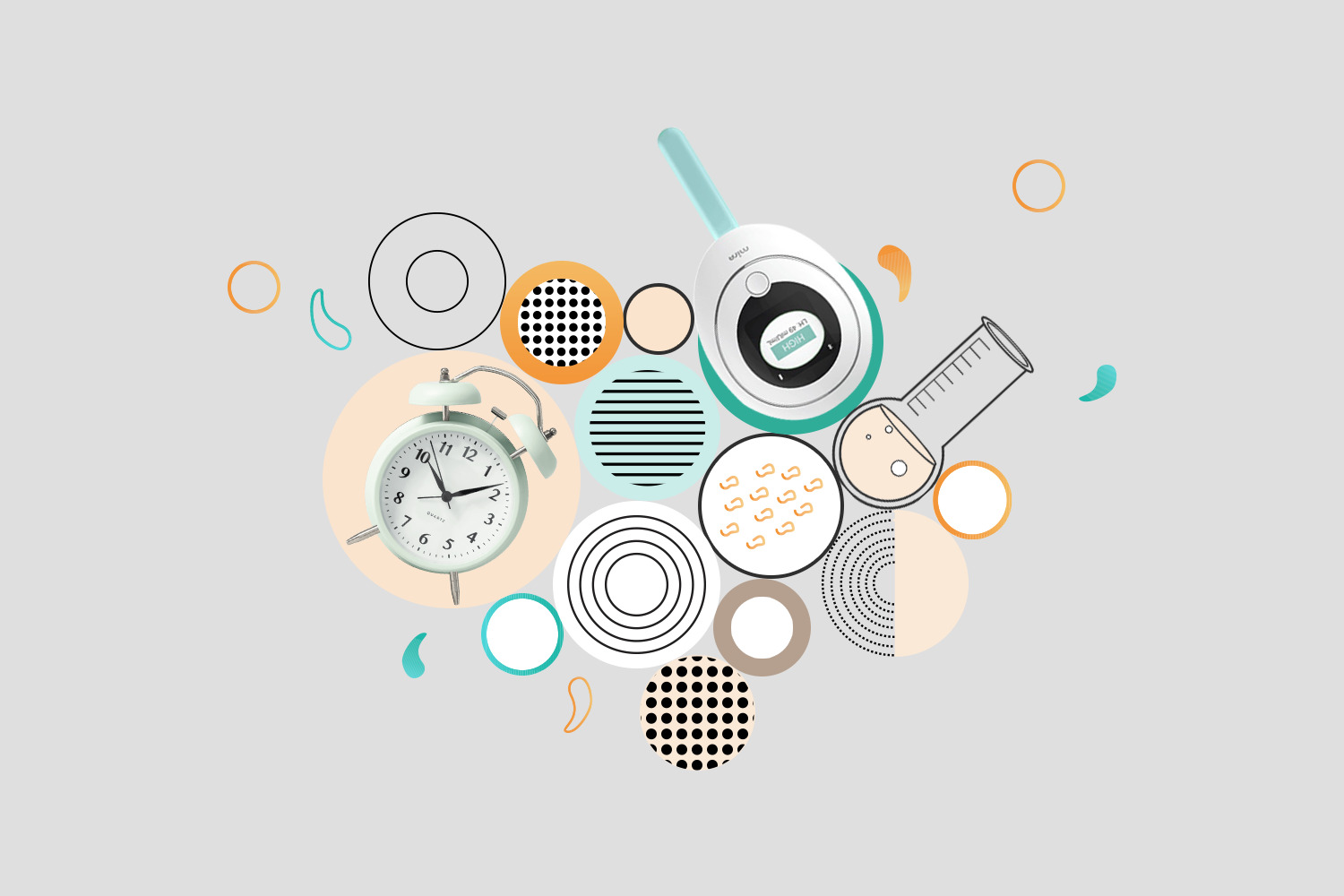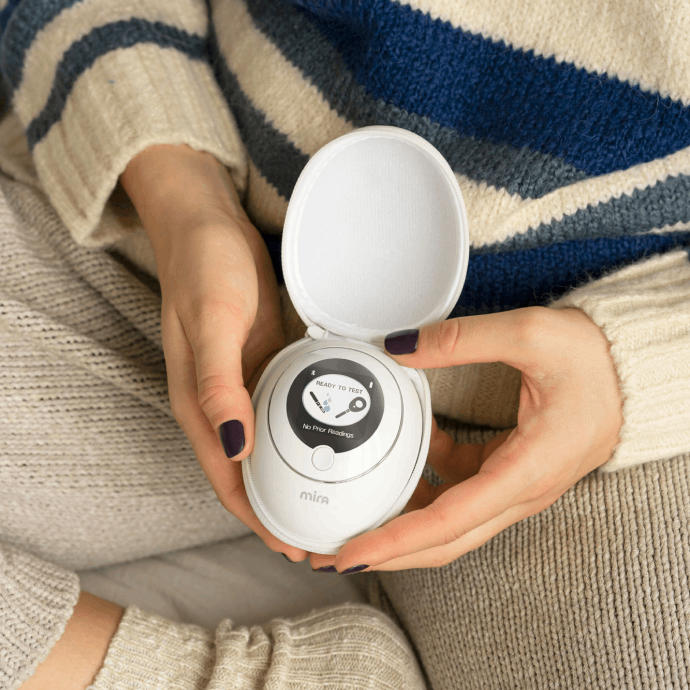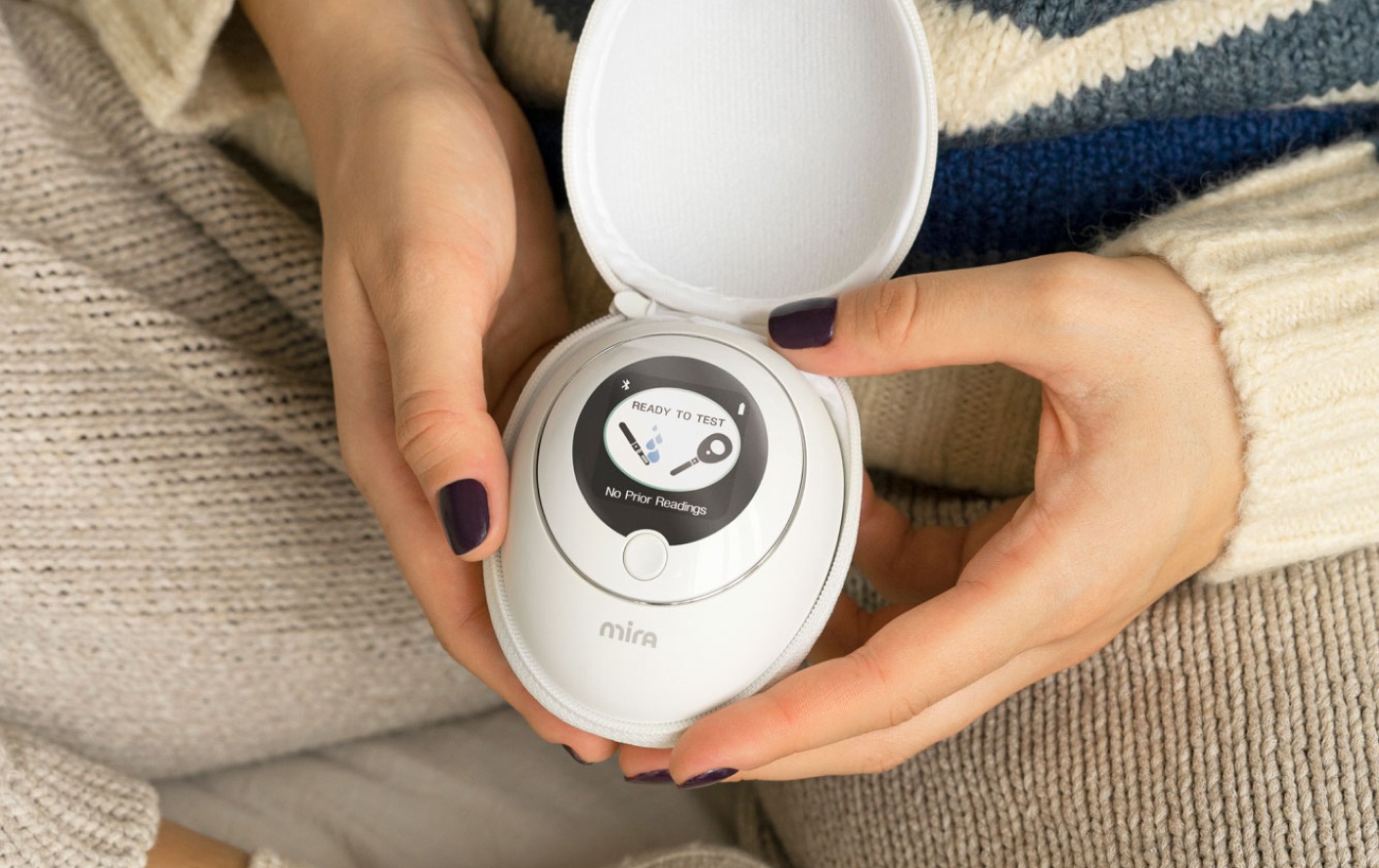How To Test With Mira Fertility
While you anxiously wait for your Mira Starter Kit, you may have questions regarding testing. We broke down the most common questions we receive, so you can fully understand how to start testing with Mira.

When should you start testing?
Before you begin, make sure you allow notifications from the Mira App on your smartphone as the app will notify you when it’s time to test. Next,familiarize yourself with the Mira App calendar screen. It will show green dots on the days you should test.
Note: Depending on the length of your cycle, you may need to test every day after your period or every 2-3 days. Most women will ovulate between 2 and 19 days before their next period.
If your Mira arrives toward the end of your cycle, simply start testing from the next one.
*Mira Tip: We recommend you download the Mira App before your Starter Kit arrives so that you can familiarize yourself with the app, enter your period dates, and check suggestions. If your period is irregular, no worries, simply enter the dates of your last period and the app will adapt. You may need to test more frequently, but thanks to Mira, you will find your ovulation period sooner rather than later.
What time is best to take an ovulation test?
You can run a test during any time of the day, however, you should choose a specific time every day to be consistent. The most important step is to limit fluid intake for 2 hours before the test. Excessive fluid intake will affect the accuracy of the tests (diluting the LH concentration). This is why many prefer using their first morning urine.
Note: If you get a positive reading in the morning, test again within the next 6 hours to be absolutely sure. Remember, LH surges often occur throughout the day. After a positive result, ovulation commonly occurs within the next 48 hours.
Different brands of ovulation predictor kits will require testing at specific times. For instance, some require morning urine due to the limited fluid intake, while others recommend afternoon tests. The truth is: an LH surge can happen throughout the day, but it will take a few hours for the hormone to appear in the urine.
*Mira Tip: For some women, an LH surge can last a few days. Others experience a surge that lasts only a few hours. No worries, both readings are normal. However, shorter surges and fertility windows are easier to miss if you only test in the morning.
Nevertheless, with Mira, you won’t miss ovulation because once the App detects even the slightest increase of LH, it automatically suggests you test again to confirm your ovulation.
How many times per cycle do you need to test?
You will need approximately 10-15 wands per cycle, depending on its length. The Mira App will dynamically calculate when you need to test and will remind you about your testing days. During the beginning of each cycle, you will test approximately once a day around your fertile window and twice per day on ovulation day.
Mira’s unique algorithm will save you the additional effort, time, and money by learning and adapting to your cycle, as it will only notify you to test when it is truly needed.
How to Perform a Mira Test and Ensure High Accuracy
How to connect:
- Make sure your Analyzer screen is on while pairing. Be patient, as it may take several attempts to complete the first pairing!
- Too many Bluetooth devices in one place will compete for the signal. If you’re having issues with pairing, try again in another room or an isolated area of your home.
- Wait up to 15-20 seconds to connect after tapping on “Connect Mira Analyzer”. Throughout this time, keep an eye on your Analyzer for any error messages.
- On some phones, the Bluetooth signal will vary depending on direction and distance. Try putting your phone on top, below, or within different distances around the Analyzer while pairing.
- If you have a Samsung phone, turn on “Location” when pairing.
- If you are still experiencing connection issues, please restart the Analyzer or push the “reset” pinhole on the back of the Analyzer and try again.
How to test:
- Always test with a fresh urine sample immediately after collecting it as hormones degrade quickly. Waiting 15 minutes can make a big difference in the test results.
- Leave the test wand in the urine sample for 20 seconds. Sampling the urine for too long or not enough time may cause test errors. Important: the requirement for liquid dipping is above three squares and below the MAX line. If you directly drop the dipstick into the urine cup or hold the test strip too high so that the urine does not exceed the distance of three squares, it will result in insufficient urine volume, leading to incomplete test runs.
- Do not shake the test wand after sampling the urine.
- Keep the sampling end of the test wand pointing down at all times after sampling the urine. Do not intuitively lift the sampling end higher than the reading end of the wand when reversing the cap.
- Insert the test wand immediately into the Analyzer after sampling the urine. Important: If, after dipping, you try to locate the analyzer’s insertion port and you end up inserting the test strip upside down, it can cause the urine to flow backward, leading to incomplete test runs.
- After sampling, keep the Analyzer on a flat and horizontal surface as you insert the test wand. Do not move or tilt the Analyzer during the 16-minute countdown.
- Once the reading is completed, the test wand cannot be reused. The Analyzer will show an old test result if an already-used wand is re-inserted.
Want to learn more about performing an accurate Mira test? Check out this video instruction below!
How to test with Mira Fertility

How to Read your Mira Test
We put together a few questions we often receive such as:
Why is my hormone level low? / Why can’t I see my ovulation? / Why isn’t the analyzer detecting my surge? Keep reading to find the answers:
Fluctuating hormone levels
If you’re seeing some odd numbers, bear in mind that hormones fluctuate from person to person and cycle to cycle. Also, the pattern of your “hormone curve” is more important than the absolute value, always.
Once ovulation occurs, you will identify a sharp increase in the luteinizing hormone (also called LH) levels. Note that these peaks and values in LH also vary greatly.
The truth is some women have a slightly lower LH peak value compared to the average. If this applies to you, try testing again in 6 hours after you get a medium test result. This will help you confirm if you’re having an actual LH surge.
Note: LH varies very sharply. A surge can start and end in just 24 hours. Therefore, it is very common to see a surge in the morning and have your LH levels drop back to a minimum by the afternoon.
Whenever you identify your LH surge, this means you will ovulate within 12-24 hours and marks the best window of time to try for a baby! For the most accurate test results, ensure you always use the first-morning urine or limit fluid intake for at least 2 hours before each test.
My LH level is high. What do I do?
As soon as you identify an LH surge, this means you will ovulate in the next 12-24 hours – which is your best chance to try for a baby!
But before you get to the Baby Dance, Mira will ask you to re-test in 6 hours after a raised LH value to confirm ovulation.
Note: The LH surge in urine often peaks in the afternoons. If your test results in an elevated level of LH in the morning, your LH could peak further in a few hours.
What does the Fertility Score mean?
The Fertility Score helps you understand how fertile you are during a cycle:
- 10 is often your ovulation day
- 0 or 1 means low fertility
On average, ovulation occurs 14 days before the beginning of the next period, but this may not be accurate for every woman. As we mentioned, every body is different, therefore so is every cycle’s length and duration. Ovulation days can even differ between two cycles with the same lengths.
When using Mira for the first cycle, the app will predict your Fertility Score based on the cycle information you entered into the app. The fertility score will then adjust based on each hormone test in the future. In order to stay consistent, it is essential that you test on the days marked with a green dot on the app’s calendar.
Once ovulation occurs, you should see a sudden increase in LH levels, although the peak value can vary greatly.
What we mean when we say “average”
Depending on a woman’s menstrual cycle, the range of numbers will vary. According to medical standards, this is what we refer to when we say a number/reading is “average”.
– Women, follicular phase of menstrual cycle: 1.68 to 15 IU/L
– Women, midcycle peak: 21.9 to 56.6 IU/L
– Women, luteal phase: 0.61 to 16.3 IU/L
– Women, postmenopausal: 14.2 to 52.3 IU/L
When we mention the “average numbers”, we’re suggesting that hormone numbers vary because we are all beautifully different! What’s more interesting, is that only a small percentage of women actually fit into this “standard” range.
Note: If you ever notice a surprisingly low LH level and are not sure why we recommend you consult with your doctor and conduct additional medical examinations. You can always use Mira’s accurate readings to boost the knowledge of your medical professionals for optimal results and assistance!

A little extra support from an expert can go a long way
Book an online consultation with one of our Hormone Health Coaches.
Schedule NowWe hope this information has been enlightening for your fertility goals! If you’re in need of more insights regarding your data, results, and hormone levels, feel free to send an email to support@miracare.com or check our FAQ! We are happy to help.
Mira’s Editorial Process
All content produced by Mira meets stringent editorial standards, ensuring excellence and accuracy in language and medical precision. Every piece undergoes thorough fact-checking and review by qualified professionals. Check out our full editorial process to learn more.




